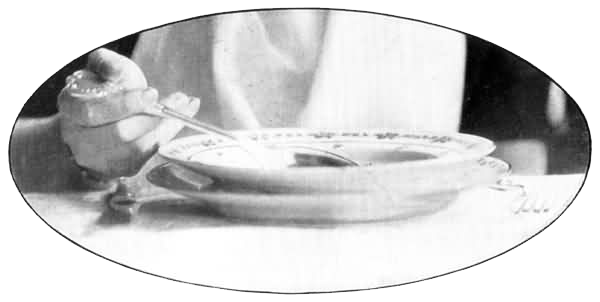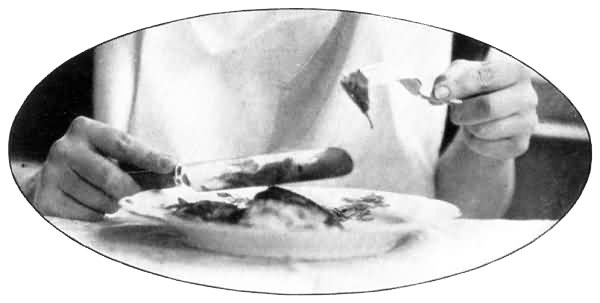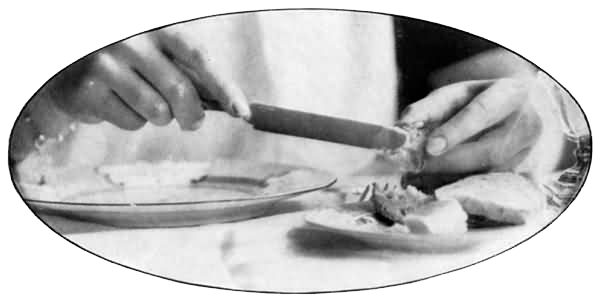In the early editions of Etiquette, Emily Post articulates a meticulously striated space. A gentleman takes off his hat in the presence of ladies in the elevator of a hotel, club, or apartment, but not in the corridor or in the elevator of an office building, where he should leave his hat on as is typical in the street. Unless of course he meets a lady he knows in the street, in which case he should take his hat off. She distinguishes between elevators and hallways, but also between the opera and the theater, the city house and the country estate, notes and long letters, luncheon and tea, ad infinitum. Post’s architecture is one of thick walls, where the separation of spaces matters, not just for the sake of physical organization, but for the maintenance of social form.
The essential guide to American manners, first published in 1922, teaches its readers how to become “best society”—how to join the “association of gentle-folk, of which good form in speech, charm of manner, knowledge of the social amenities, and instinctive consideration for the feelings of others, are the credentials by which society the world over recognizes its chosen members.” She is always careful to insist that the best homes and most well-behaved people are not always the wealthiest, though (unlike Post herself) they do tend to be from “those families and communities which have for the longest period of time known highest cultivation.”1

Unlike drier guides to manners, Etiquette is a story full of characters: Mr. and Mrs. Gilding, with their palatial country house called Golden Hall, their dear friends the Worldlys, the Kindharts, the Wellborns, and of course Mrs. Oldname, with a smaller but perfectly appointed home. Mr. and Mrs. Nono Better aren’t introduced until the second edition, and Richan Vulgar makes clear that money is not enough to ensure a position in the best society. The characters provide the reader both something to aspire to and a warning: very few will be able to meet the impeccable standards of Mrs. Worldly, but at least they can avoid being labeled Mr. Parvenu.
While there is an obvious elitism in setting standards of choreography for two footmen answering the door (plus the butler, with formal company), Post’s ambitions were vaguely more egalitarian. Debutantes and their mothers probably did not need telling that it would be impractical for them to share a maid—her audience is instead those who would not learn these manners otherwise. Whether as a marketing ploy or in earnest, Post assures “you” that with just a little more study and the appropriate introduction, best society can be yours, too. The existence of Etiquette as a book implies that manners are something that can be learned, even by those who weren’t raised in a world where they can intuitively distinguish between a dance and a ball.
Post insists throughout the book that good manners are simply the way to show consideration for others, as arbitrary as some of her conventions may seem to us. Surely it still holds that it shows a lack of consideration to “whisper and rattle programmes and giggle and even make audible remarks throughout a performance.” And while speaking with a cigarette in your mouth may seem inoffensive to us today, speaking with food in your mouth could seem just as inoffensive at some point in the future.

In some ways, Etiquette and the succession of etiquette manuals it was a part of were an attempt toward a more “democratic” society. The intractable differences of class could be overcome by anyone with the patience (and the resources) to learn these rules and abide by them. In a country where people are expected to pick themselves up by their bootstraps, it would only be natural that they pick up their manners in the same way. There is a whole chapter on “How Total Strangers Acquire Social Standing,” but while Post has very specific advice for how that can happen, mobility in the world of Etiquette was, of course, strictly limited by implicit norms of race, class, sexuality, etc. It is only a myth that anyone can pick themselves up by their bootstraps, and in the same way, it is only a myth that a firm grasp of good manners is the golden ticket to high society. Later editions, introducing characters like Mrs. Three-in-One (who has to be her own hostess, server, and cook!), are more clearly targeted at those looking to improve their social standing within a wider range of communities, but the first is fairly specific to success in the world Post lived in herself.
The book is organized by the different spaces or situations readers may find themselves in—“On The Street And In Public,” “At The Opera, The Theater, And Other Public Gatherings,” and “The Well-Appointed Home,” with separate chapters for especially important duties, such as the debutante or the chaperone. The first time you are invited to a “House Party in Camp,” you can quickly flip to the appropriate chapter to learn you should not bring your valet, and while there will be linen pillowcases, they will not be ironed. Lessons do not readily apply across chapters. When visiting an apartment in the city, you can expect a servant will guide you to the drawing room, but at a country house your host or hostess will meet you in the front hall.
The question that chases readers through Etiquette is not why good manners are important, but rather why they change from place to place. Why should you behave differently at the theater from how you act at the opera? If manners are merely a representation of cultivation and good taste, then why should they vary between the private and public worlds? Why should you smoke a pipe on a country road but a cigar in city streets? Why can you smoke a cigarette in either?

What is interesting about these different spaces is that, while gender is key to delineating who does what, gender doesn’t always play the part we expect. To be fair, especially in the first edition, very few members of her audience would be spending much time in, say, the kitchen. Nevertheless, Post is explicit that, for example, “there is no difference between women’s and men’s clubs.” Contemporary stereotypes may have it that wedding planning is more feminine, but the first sentence of Post’s chapter “The Day of the Wedding” reads “No one is busier than the best man on the day of the wedding” (except, of course, the servants). Likewise, in her chapter on “Etiquette in Business and Politics,” both especially male in her day, the opening anecdote portrays the influence of a senator’s wife.
Manners in Etiquette do many things, but foremost among them is the protection of some form of privacy. Everyone needs a formal introduction, and you may speak only to those you are not intimate with in certain ways and at certain times. You can visit in these circumstances, but not those, and you absolutely must be out the door after twenty minutes. “On no account must a visitor stay an hour!” You should never say someone’s name in the street or call out a name in public; it is bad to draw attention to yourself and worse to draw attention to others. Etiquette ensures against a sort of uncouth intimacy: an opera box is like a home, thus you would visit a woman in an opera box only if you would visit that woman in her home. Etiquette polices inside and out, maintaining a string of barriers to intimacy for its adherents.
Which is perhaps where her project becomes less democratic. The moral of the book may be that anyone is welcome if they learn the rules, but those who fail to do so can expect nothing more than a hard look from Mrs. Worldly. Very quickly, these spaces of behavior become spaces of exclusion. As much as Post’s manners are meant to ensure that everyone is made comfortable and shown due respect, meticulously defining the manners of a space becomes a proxy for defining who belongs and who doesn’t, who gets to stay and who will never be invited to tea again. The diplomat who speaks to the senator’s wife in a hotel lobby with a cigar in his mouth will certainly not be confirmed for higher office.

Today, you are likely to meet your host at the front door whether you arrive at a home in the city, suburbs, or country. Spaces of behavior certainly still exist (don’t shout in a museum!), and we still use good manners as a way to show respect and courtesy to those around us. Those spaces have of course changed over time, but conventions of minimum personal space, for example, are still specific to whether you are standing on the subway during rush hour or waiting in line at the grocery store.
The dark legacy of the spaces of behavior that Post describes come in the form of spaces that—through their division—seem to allow explicitly inconsiderate behavior. To take a recent example, this is the way that the inherent maleness of men’s locker rooms has been said to excuse a deeply misogynistic “locker room talk.” To suggest that something like “locker room talk” even exists necessitates a belief that certain forms of behavior are acceptable in some places and not others. Rather than excluding people from a dinner party because they are toadying and charmless (which Post would call a fault of their own), what is so insidious about something like this alleged locker room is that it uses its exclusiveness as the impetus for site-specific behaviors. Whereas Etiquette is a manual to help its reader reach best society, locker rooms lack even that appearance of invitation—no manual or position will help a woman fit in there, as many female sports journalists have learned in the past.2 Because particular people (namely, the subjects of locker room talk) are excluded, it apparently becomes acceptable to casually joke about sexually assaulting them. In the same way, racist or homophobic language is portrayed as “more okay” in a space where the targets are not perceived to be present.

Very unlike the types of space described by Post, these spaces of exclusion are not necessarily material—the now infamous conversation between Donald Trump and Billy Bush that was later dismissed as “locker room talk” was, in fact, on a bus and had nothing to do with a physical locker room. Adapting these physical spaces of behavior into rhetorical ones provides a shoddy excuse for conduct that would not be acceptable in a larger public, but protects the intimacy of an exclusive group. Whereas Post’s manners define intimacy within a financial or social class, locker room talk and spaces like it protect intimacy within classes or groups that (to an extent) recognize what they are doing is wrong. Post’s locker room behavior would set standards for borrowing soap or walking around in your underwear, not whom you are allowed to disparage or objectify within a given space.
In a lot of ways, the manners that Post describes are somewhat frivolous and, especially in their obsolescence, come off as charmingly pedantic. Many people were, of course, excluded from “best society” along lines of race or class or sexuality, but that is not a product of the differences in conduct between a casual supper and a formal dinner. Despite all of the particularities and standards she presents throughout the book, Post is explicit that “a gentleman’s manners are an integral part of him and are the same whether in his dressing-room or in a ballroom, whether in talking to Mrs. Worldly or to the laundress bringing in his clothes. He whose manners are only put on in company is a veneered gentleman, not a real one.”3

Wearing white gloves only at a ball or as an usher in a wedding sounds like an entirely superficial rule today, but Post believes in that superficiality as well. What we take from Etiquette is not the value of coded behaviors, but a reminder of the civility and empathy that support them. What makes a gentleman or best society is not their attire but rather the respect they show to others regardless of location or position. There are spaces of behavior because being considerate means different things in different spaces, not because there are some spaces where it is okay to be rude or insulting.
While demanding that everyone be on their best behavior in all spaces at all times may seem like too much to ask, Emily Post asks for that plus visiting cards engraved on white unglazed bristol board.
-
Emily Post, “What Is Best Society?,” in Etiquette (New York and London: Funk & Wagnalls Company, 1922). ↩
-
Ben Pennington, “What Exactly Is ‘Locker-Room Talk’? Let an Expert Explain, ” New York Times, October 10, 2016, link. ↩
-
Post, “The Fundamentals of Good Behavior: Decencies of Behavior,” in Etiquette.
Note: All images and captions in this text are from Emily Post's Etiquette (New York and London: Funk & Wagnalls Company, 1922). ↩
Jesse Connuck is the managing editor of Columbia Books on Architecture and the City. She always tears her bread and butters each piece individually.

